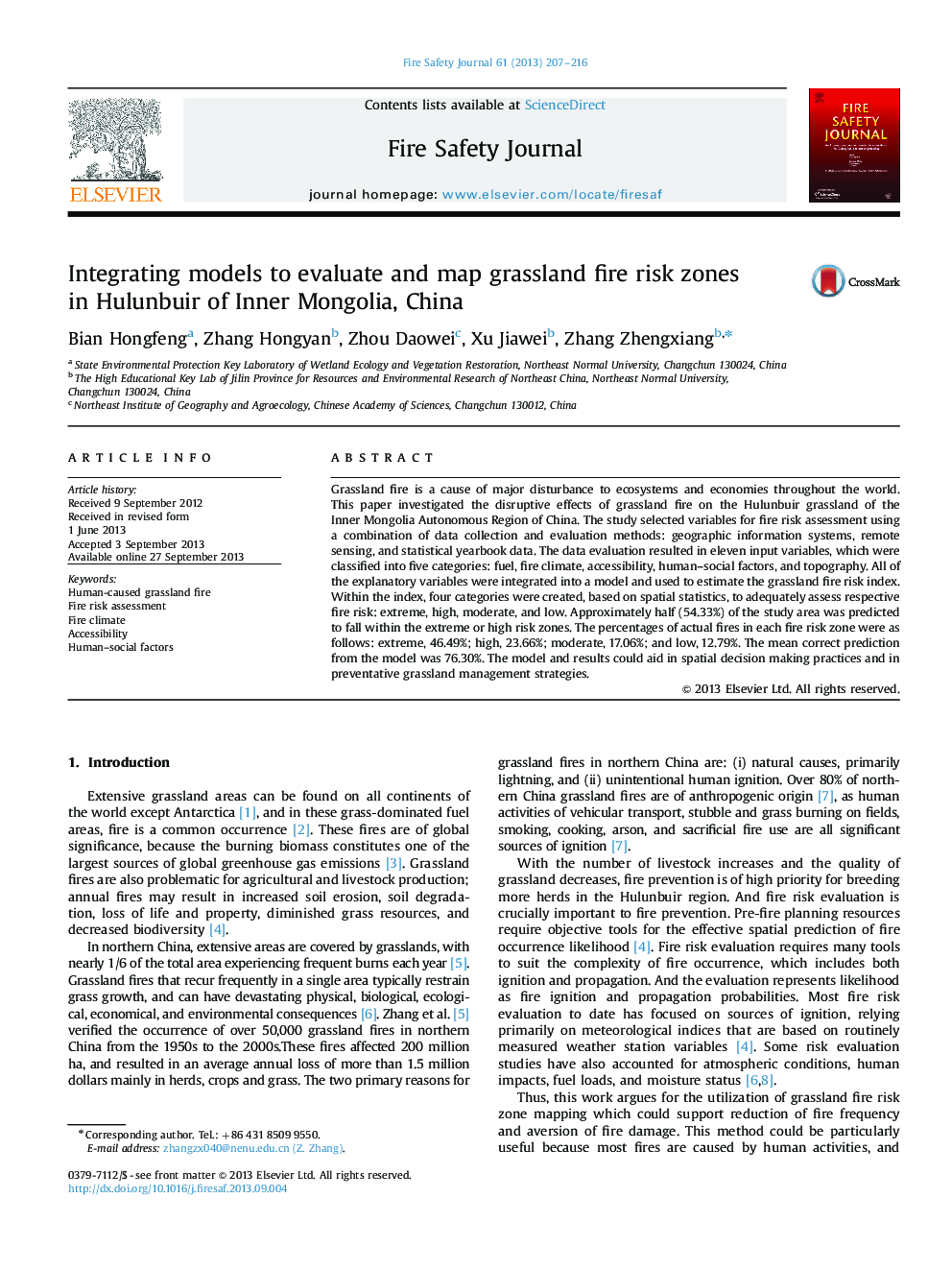| Article ID | Journal | Published Year | Pages | File Type |
|---|---|---|---|---|
| 6742257 | Fire Safety Journal | 2013 | 10 Pages |
Abstract
Grassland fire is a cause of major disturbance to ecosystems and economies throughout the world. This paper investigated the disruptive effects of grassland fire on the Hulunbuir grassland of the Inner Mongolia Autonomous Region of China. The study selected variables for fire risk assessment using a combination of data collection and evaluation methods: geographic information systems, remote sensing, and statistical yearbook data. The data evaluation resulted in eleven input variables, which were classified into five categories: fuel, fire climate, accessibility, human-social factors, and topography. All of the explanatory variables were integrated into a model and used to estimate the grassland fire risk index. Within the index, four categories were created, based on spatial statistics, to adequately assess respective fire risk: extreme, high, moderate, and low. Approximately half (54.33%) of the study area was predicted to fall within the extreme or high risk zones. The percentages of actual fires in each fire risk zone were as follows: extreme, 46.49%; high, 23.66%; moderate, 17.06%; and low, 12.79%. The mean correct prediction from the model was 76.30%. The model and results could aid in spatial decision making practices and in preventative grassland management strategies.
Keywords
Related Topics
Physical Sciences and Engineering
Engineering
Civil and Structural Engineering
Authors
Bian Hongfeng, Zhang Hongyan, Zhou Daowei, Xu Jiawei, Zhang Zhengxiang,
